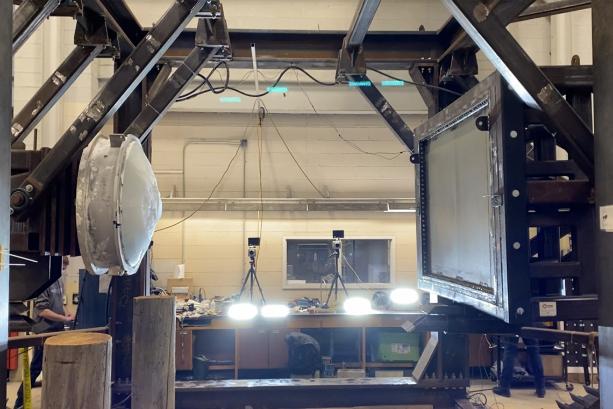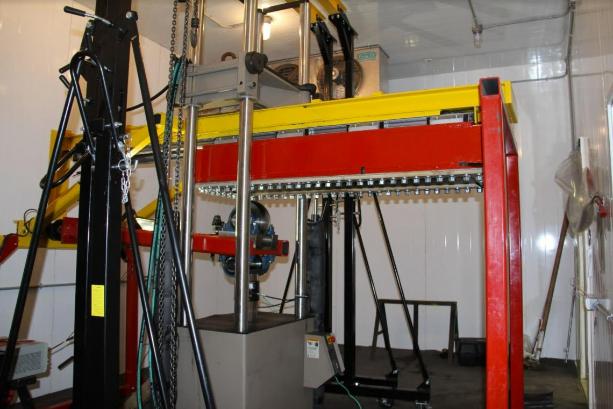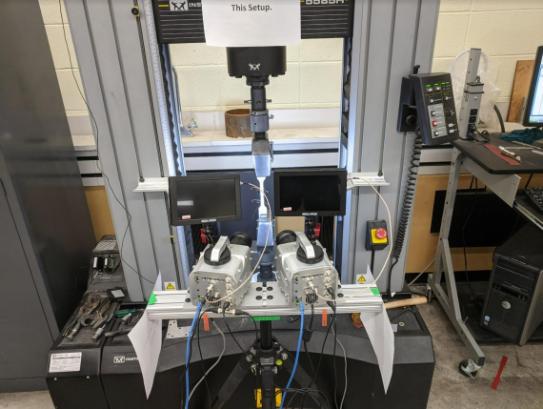Extreme Loads on Arctic Structures Laboratory (ELAS)
About | People | Equipment | Location
About
The Extreme Loads on Arctic Structures Lab (ELAS) investigates the response of ship structures subject to ice impact: including icebreakers, ice-strengthened ships, and non-ice class ships and naval surface vessels. We use a combination of quasi-static and impact laboratory apparatus (some with full-scale ship structures); sliding impact apparatus; advanced material characterization; and finite element modelling using a 272 core high-performance computer. We develop related engineering tools for ship owners, designers, operators, regulators and classification societies.
The research activities at ELAS Lab include:
- Capabilities of low and non-ice class vessels in ice
- Effects of moving ice loads on damage to hull structures
- Advanced FEA of trawl gear interaction with subsea pipelines
- Kulluk Steel project
People
- Dr. Bruce Quinton
- Arctic ships and structures
- Extreme and accidental loads
- Marine structures and materials
- Arctic offshore and marine safety
- HPC and parallel processing architecture and applications
- Dr. Claude Daley
- Ship structures
- Ship / Ice Interaction
- Ice cover mechanics and simulation
- Discrete mechanics and chaos
- Solid destruction mechanics
- Design/Regulation rule development
- Dr. Stephen Bruneau
- Ice loads on structures
- Wind Engineering
- Energy Policy
- Industrial Outreach
- Dr. Rocky Taylor
- Ice-engineering problems, particularly those related to ice-load estimation for the design of offshore structures and the mechanics of compressive ice failure
- Dr. Ahmed Elruby
- Dr. Bruce Colbourne
- Dr. Robert Gagnon (NRC-OCRE)
Equipment

Located in FEAS Structure Lab
- Full-scale medium-energy impacts between ship hull grillages and ice or rigid indenters.
- Relative impact speed: 7.5 m/s (~15 knots)
- Total impact energy: 67.3 kJ (~50,000 lbf-ft)
- Ship grillage area: 2.032 m x 1.36 m (80 in. x 53.5 in.)
- Tests conducted at ambient temperature
- High-speed 3D Digital Image Correlation

Located in FEAS Thermal Lab inside Cooler 1
- Applies moving/sliding loads on long plates or long stiffened plates
- Computer-controlled bi-axial hydraulic actuation of indenter
- Load capacity normal to plating: 500 kN (110 kip)
- Load capacity tangential to plating (sliding force): 250 kN (50 kip)
- Ice or rigid indenters
- Tests conducted in an environmental chamber at -30°C to ambient temperature

Mobile – specialized 3D DIC equipment is mobile to take advantage of the various FEAS material characterization apparatus (e.g., the Instron and Charpy notch toughness machines in the mechatronics lab; the Tinius-Olsen machine in the Structures Lab, and the MTS machine in Cooler 1 in the Thermal Lab)
- Two systems are in use:
- Hi-resolution 3D Digital Image Correlation
- Hi-speed 3D Digital Image Correlation
- This equipment is primarily used for advanced material characterization
- Lode Parameter and Triaxiality-based fracture characterization.
- Static to medium strain rate capabilities
Located in FEAS 3rd Floor server room
Location
Equipments are located across the four labs below:
Structures Lab, Thermal Lab, Mechatronics Lab, Server Room (3rd Floor)
Faculty of Engineering and Applied Science
Memorial University of Newfoundland
St. John's, NL